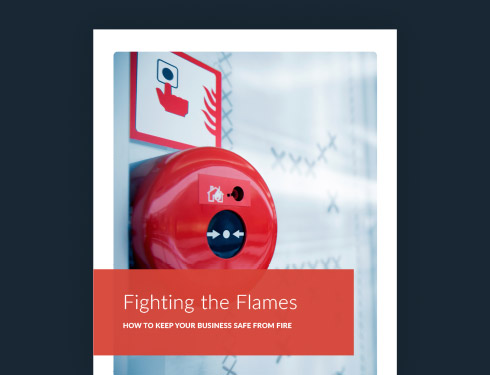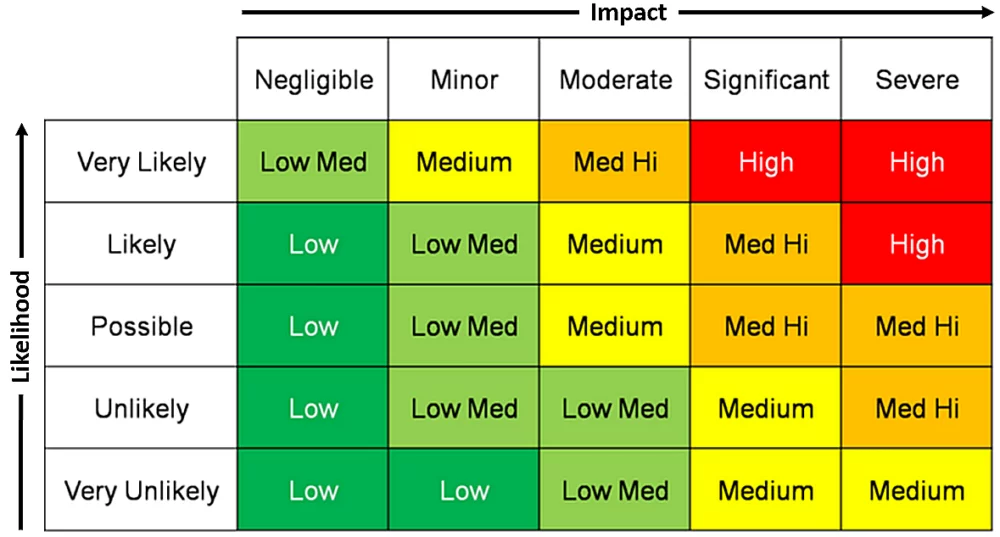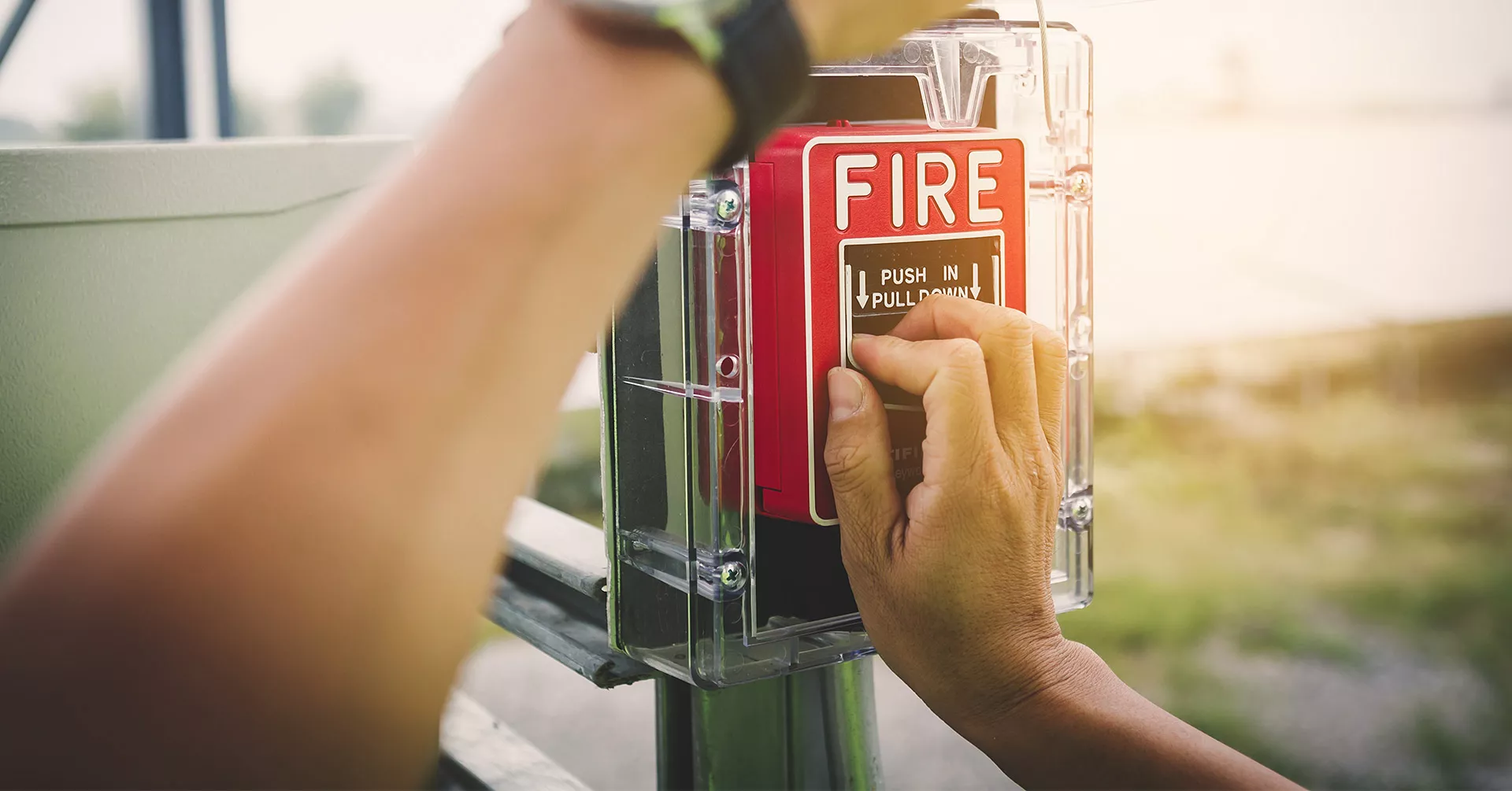
How to Create a Fire Prevention Plan [+ eBook]
The best way to stay safe from the dangers of workplace fires is to make sure they don’t happen in the first place. Learn how to create your own fire prevention plan here.

Fires cause thousands of deaths and tens of billions of dollars of damage every year in the U.S. alone. Even though the National Fire Protection Association (NFPA) estimates that the occurrence of business fires decreased by roughly 71% between 1980 to 2011, from 2011–2020 the cost of fire damage to businesses rose by tens of millions of dollars. Despite progress, business fires continue to cause deaths, injuries, and property damage every year and should not be taken lightly. It is, in large part, thanks to ongoing fire prevention planning that these rates have dropped over time.
Fires can be caused by external factors such as wildfires, which every business might have to prepare for, but they can also result from fire hazards unique to your occupation or workplace. While both a construction site and an office building would need to prepare similarly for a wildfire, the construction workers will also have to worry about things like welding torches or grinders throwing off sparks that could be sources of ignition. And an office setting might have a kitchen with an oven, as well as inconspicuous flammable substances. That’s why a careful hazard assessment is the first step toward fire prevention.
Fires are capable of extreme damage not just to your employees and your facilities but also to your organization’s business continuity. Luckily, all of these problems can be avoided with a well-designed fire prevention plan.
How Does a Fire Prevention Plan Benefit Your Workplace?
If implemented correctly, a fire prevention plan will decrease the risk of a fire breaking out at your workplace. It requires safety leaders to consider the particular fire risks and countermeasures present in the workplace and create a plan around those variables. The plan itself looks specifically at potential fire hazards and offers instructions to minimize those risks. An ounce of prevention is worth a pound of cure—or perhaps even more in the case of fires.
How to Create a Fire Prevention Plan
All fire prevention plans will differ depending on the location, type of work, and other factors, but they are all created in the same way. Follow these steps to craft a plan of your own that will keep your people and your business safe from fires.
1. Determine the likelihood of risks
No single cookie-cutter plan exists that will be sufficient for any and all businesses. Instead, you need to tailor one exactly to the nature of your business.
A risk management plan for fire safety and prevention involves identifying as many potential dangers as possible. This process should include stakeholders from all areas of the business, especially those recognized for facing fire emergencies most often.
One can draw on this brain trust to create a list of all known potential fire risks in the business. Then, rate each of them on two different scales: probability and severity. Break the list down and map it to a risk matrix that visually represents both of these qualities along two axes.
 Source: https://www.corporatecomplianceinsights.com/alternative-risk-matrices/
Source: https://www.corporatecomplianceinsights.com/alternative-risk-matrices/This matrix helps to identify the high-probability, high-severity events and prioritize them in a fire prevention plan. While you investigate and remedy the most dangerous hazards, you’ll be able to also identify risks that fall further down on the priority list.
2. Housekeeping and facility prep
The best method to prevent workplace fires is to make the physical workplace more fire-resistant and prepare employees to effectively react and contain fires.
For example, in some industrial workplaces, there might be areas prone to a buildup of flammable oil residue. Part of the fire prevention plan should include measures to limit that buildup and avoid open flames through good housekeeping procedures.
Any combustible waste materials, flammable liquids, or other fuel from a business’s manufacturing process should be stored in airtight metal containers and removed only when necessary.
Even fire-resistant materials can pose a hazard if they are obstructions to emergency exits or pose tripping hazards to workers. For similar reasons, deal with spilled liquids and other slipping dangers proactively.
Finally, certain electrical equipment—including extension cords, personal space heaters, and hot plates—are common causes of office fires, so instruct employees to operate these items responsibly.
3. Equipment procurement and maintenance
We’re lucky in this day and age to have active and passive fire protection equipment that our ancestors would have never dreamed of. These tools are widespread and essential in keeping workers and structures safe from fires.
Once you’ve examined your organization’s potential fire hazards it’s time to find fire suppression tools that work for your organization.
Each of these systems is critical to limiting a fire’s damage if one were to break out. Remember that some of these options might not be available at certain job sites—such as when working outdoors, where permanent fire extinguishing systems are rarely deployed.
Portable fire extinguishers
Portable fire extinguishers are the most common of the fire protection systems. You (hopefully) know where yours is in your house, likely near a heat-producing appliance such as the stove. The same should be true of portable fire extinguishers at work: employees will know where to find them as they are positioned in areas identified as high fire risks.
Workplaces are typically much larger than homes, so they naturally require more fire extinguishers to cover all areas. Deploy fire extinguishers throughout the workplace, ensuring they are easily accessible and positioned near potential fire safety hazards.
These extinguishers are convenient and save lives every day, but they’re not a set-it-and-forget-it type of solution. Over time these extinguishers might slowly leak and lose pressure, making them less effective at fighting fires. Luckily, they have gauges on them that indicate when maintenance is required.
No matter what, always “recharge” fire extinguishers after every use, even if not empty, and establish a schedule to recharge them periodically throughout their lifespan even without any use.
Fixed extinguishing systems
Fixed fire extinguishers work on similar principles to that of their portable counterparts, but they can cover entire buildings and may be triggered automatically when a fire is detected. When various sensors detect a fire, fire extinguishing substance is distributed by a network of pipes throughout the building and released into the environment, smothering the flame and limiting damage. They can use a wide variety of fire-suppressing substances to do this, from water to wet or dry chemical compounds, which are deployed from nozzles or sprinkler systems in the ceiling to cover entire floors of buildings with fire-stopping stuff rapidly.
These systems are effective but also require more specialized maintenance than portable units. If you have a fixed extinguishing system, monitor the containers holding extinguishing agent for pressure loss over time (weigh the containers if no pressure gauge is available), and check the entire extinguishing plumbing system for leaks annually.
Alarm systems
When a fire starts, it can be hard to notice it at first, especially if it’s on the other side of a large building. That’s where fire alarm systems come in. This system is able to passively detect smoke particles and heat, and it triggers throughout the building once it determines there is a fire. Alarm systems use loud noises, flashing lights, and recorded messages to spread awareness.
These systems are critical to making everyone at the workplace aware of the fire and prompt them to activate their fire evacuation plan and egress the building. You can also set alarm systems to automatically alert the local fire department.
These electronic systems are less likely to deteriorate over time than physical fire suppression systems are. However, they should still be tested at least annually to make sure that they’re in working order.
4. Documentation, delegation, and training
Once you have your fire prevention plan figured out, it’s time to set it into motion. Write down all of the hazards, their likelihoods and severities, all of the things that need to be cleaned up or fixed around work areas, and all of the fire suppression equipment your organization needs.
Once that’s done, assign a person or job title to each of the action items. For example, you might require your machinists on duty to clean up their station at the end of their shift and team leaders to maintain fire-producing equipment. If every job is assigned to a person or a role, those tasks become responsibilities and are more likely to be completed.
With a written plan and fire prevention leaders in place, schedule comprehensive training, ensuring that all employees are able to complete it. Also, build it into the onboarding process for new hires so no one is left out and all team members can be accountable to fire prevention in the workplace. On a recurring basis—and whenever there are significant updates to the fire prevention plan—hold refresher trainings to keep fire safety top of mind across the company.
5. Emergency action plan
Fire preparedness doesn’t stop at fire prevention. Some next steps for ongoing fire safety include:
- Create a fire emergency action plan to have a structured approach to fire safety
- Create a fire emergency evacuation plan that aligns with your prevention plan
- Create or update your wildfire evacuation plan (including evacuation routes) so you’re ready for external fire threats as well
- Include recurring fire drills as part of your holistic fire safety and emergency response plans
Are There OSHA Standards for Fire Prevention?
We’ve emphasized that fire safety planning is far more effective if engineered specifically for your organization. However, there are still some things the Occupational Safety and Health Administration (OSHA) requires of all business fire prevention plans in the United States:
- List of all major hazards
- Procedures for the handling of flammable materials
- Designated storage areas for hazardous materials
- List of potential ignition sources and how to control them
- Type of equipment needed to control each fire hazard
- Prevention of accumulation of hazardous materials
- Employees to be designated caretakers for each piece of hazardous equipment
Employers also need to make potential employees aware of the dangers that they might face in the event of a fire before offering them a position. If you follow all the steps above, you’ll have a plan that meets OSHA requirements and does as much as possible to keep your people safe.
The Time to Prevent Fires Is Now
If your organization doesn’t have a fire prevention plan in place, the time to create one is now. These plans are the first line of defense against workplace fires and the tragic damage they can bring.
A company with strong fire safety plans—including and beyond prevention—decreases the risks of all types of fires to its people and business operations. This kind of commitment also shows your employees and stakeholders that you’re dedicated to keeping everyone safe and your facilities fire-free.



